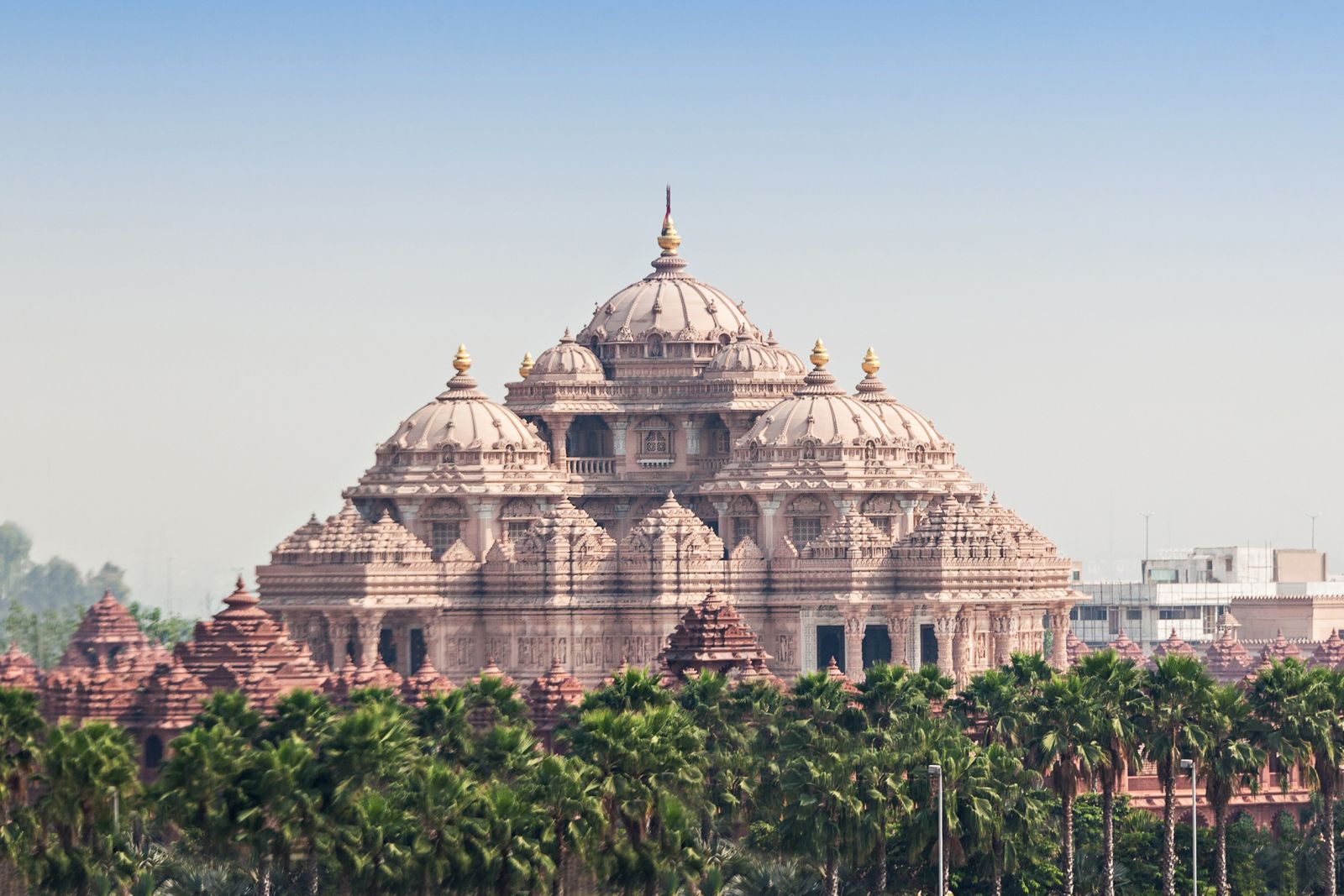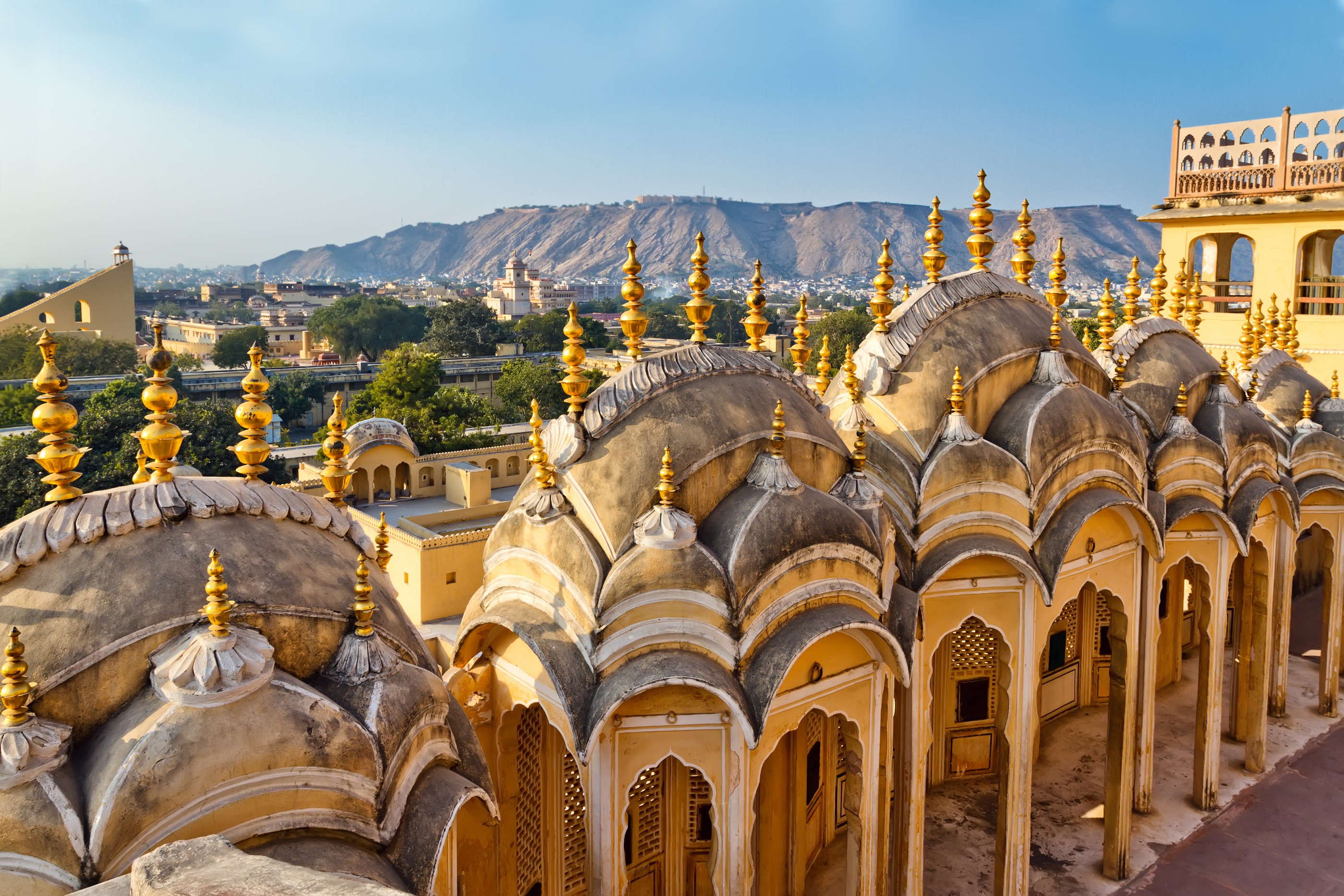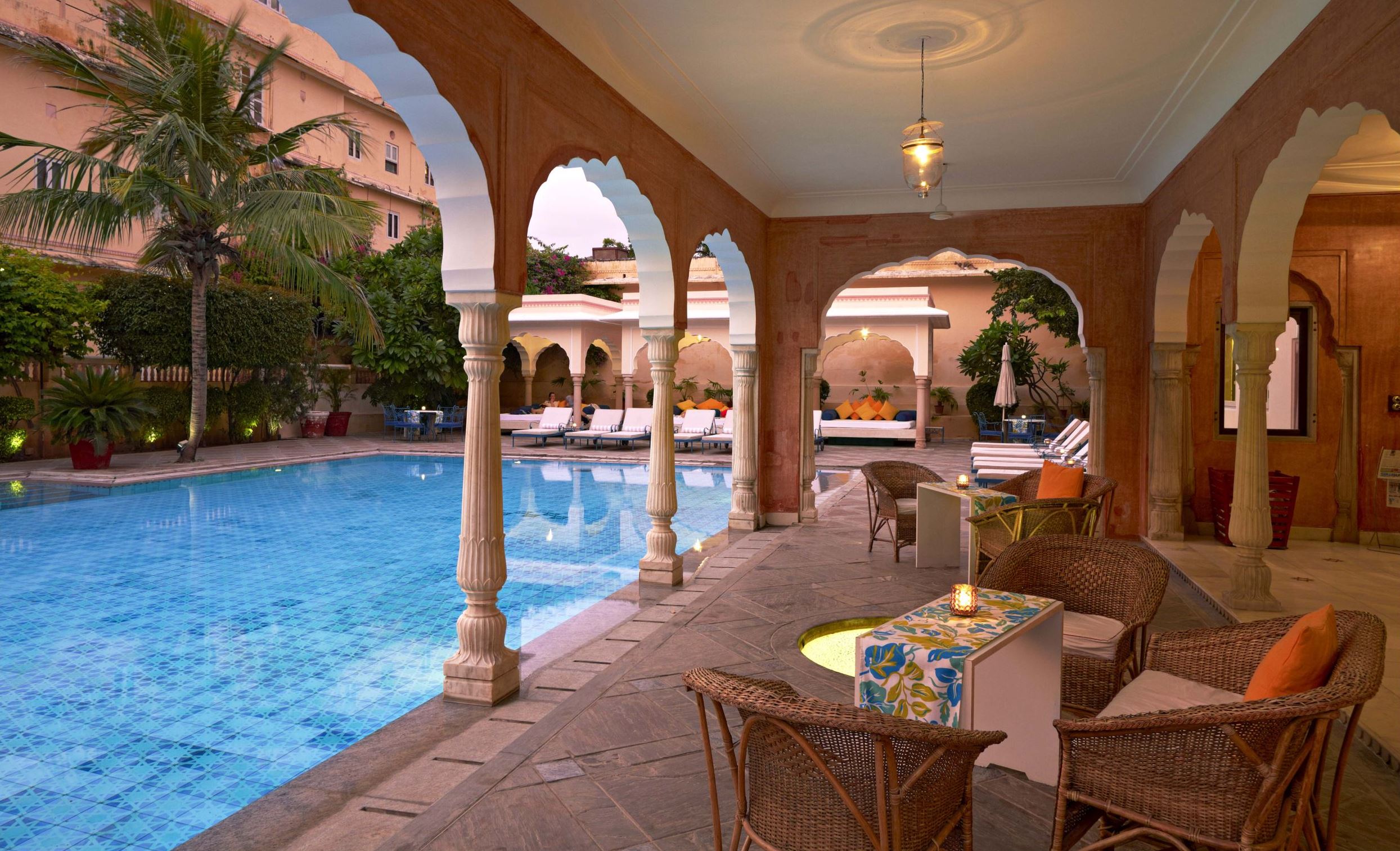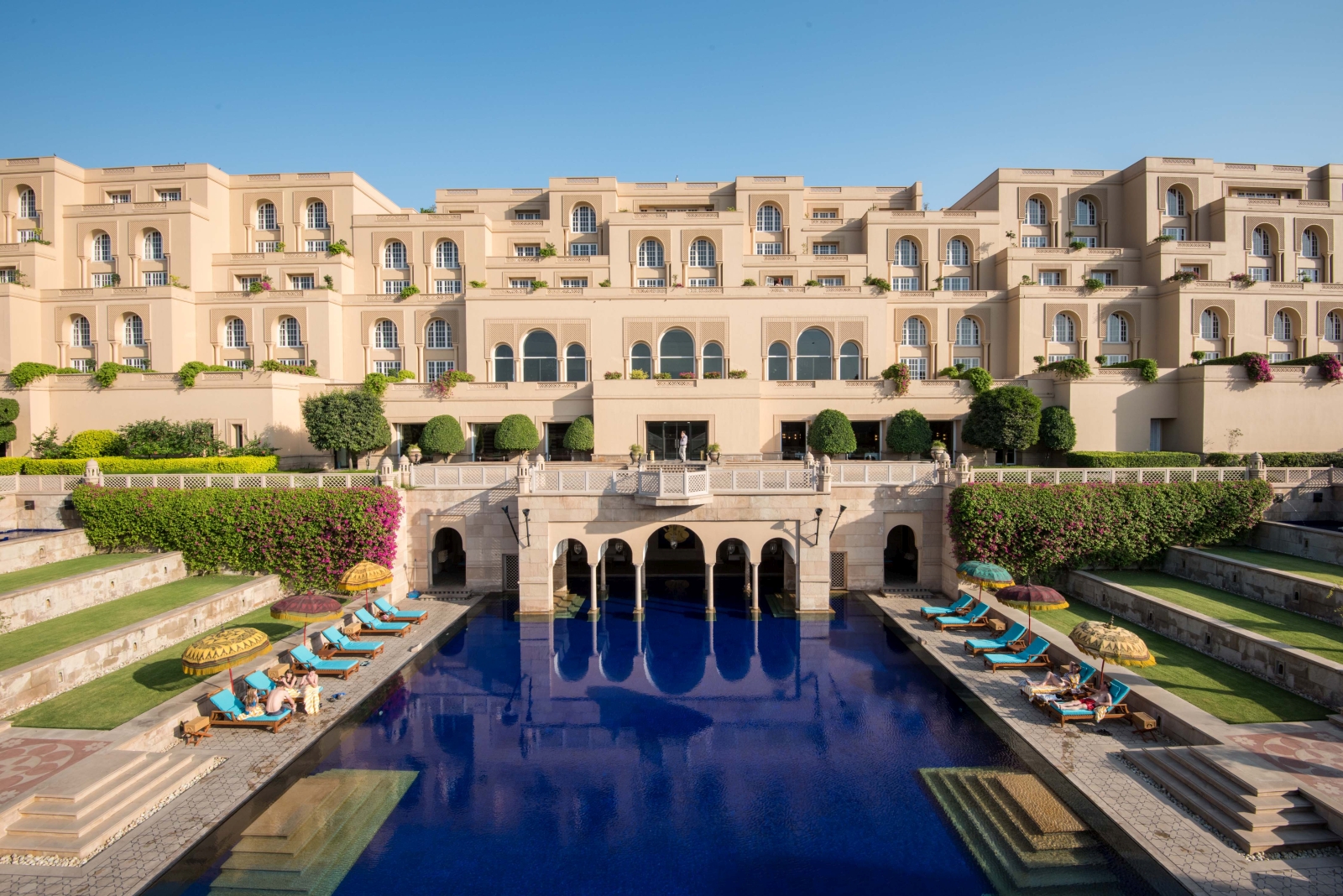The Golden Triangle is one of India’s most iconic routes, taking travellers on a three-pointed journey between the buzzing streets of the current and former capital Delhi, the mesmerising Taj Mahal in Agra and the Rajput-era charms of pink-painted Jaipur, the principal city in Rajasthan. Stepping into the heart of the triangle – and just outside it – will introduce you to another side of this captivating region, from centuries-old ghost towns and timeless villages to verdant reserves where tigers roam.
MUST-SEE PLACES IN INDIA'S GOLDEN TRIANGLE
Delhi

Ever-expanding Delhi hums with activity, embracing its past but with its eye firmly set on the future. Delve into its complex history at Humayun’s Tomb, whose Persian-Mughal design inspired the Taj Mahal, at the quintessentially Mughal Red Fort and at Edwin Lutyens’ Raj-era India Gate dating from 1921. There’s a thriving religious heritage here, too, covering the ground from Shah Jahan’s graceful Jama Masjid to the ornamented vastness of the Akshardham Hindu temple, which opened in 2005, and the Sikhs’ golden-domed Gurudwara Bangla Sahib. Explore the just-as-intriguing sights and sounds of Delhi’s daily life with an early-morning tuk-tuk adventure, a visit to Asia’s largest flower market and a guided ramble in search of the city’s best street food.
Agra

Just 100 minutes from Delhi on the air-conditioned Shatabdi Express, Agra is the home of the Taj Mahal, for which the word ‘iconic’ is something of an understatement. But this former capital of the Mughal Empire is richly stocked with other architectural beauties, from the jewel-box Itmad-ud-Daula – also known as the ‘Baby Taj’ – to the striking UNESCO-listed Agra Fort with its 500-year-old red sandstone walls. The emperors created gardens as well as tombs and fortifications; the riverside Mehtab Bagh, with its backdrop of the Taj Mahal, is a sublime example. Hit the bazaars where master artisans still painstakingly create pieces fit for a Shah, from inlaid-marble boxes to metal-thread embroideries.
Jaipur

Rajasthan’s sprawling state capital, founded in 1727 by a Rajput ruler, echoes with reminders of its princely past. In the walled Old City, the vast and ornate City Palace was built to impress and still succeeds, as does the next-door Jantar Mantar, an outdoor observatory that looks like a modern sculpture park. You can look out over both from the distinctive five-storey Hawa Mahal, essentially a richly ornamented screen from behind which the women of the court could watch the streets below. Fortified by an early morning private yoga session, you could dive into the bustle in the Old Town’s colourful craft-filled bazaars or venture out of ‘the Pink City’ to marvel at the palatial hilltop Amber Fort and enjoy memorable encounters in an ethically run elephant sanctuary.
It is recommended to allow at least eight to nine days to explore India's Golden Triangle: three nights in Delhi, one night in Agra and four nights in Jaipur
TOP TIPS FOR YOUR VISIT
BEST TIME TO VISIT INDIA'S GOLDEN TRIANGLE
The cooler months from November to February bring dry, sunny days for sightseeing in comfort. Experiencing the neon-bright celebrations of Holi, the Hindu festival of colours, love and spring, means braving the mounting heat until the day after March’s full moon.
SUGGESTED INDIA ITINERARIES

Although Red Savannah tailor-makes every holiday, we’ve used our wide experience of India to create suggested Golden Triangle itineraries to stir your imagination. 10-night Essential India includes the Taj Mahal at dawn, tiger spotting in a former royal hunting ground and a stay in an aristocratic haveli in Jaipur. On Delhi, Agra & Rajasthan in Style, fill 11 days discovering both the Golden Triangle’s highlights and the tranquillity and timelessness of Rajasthan’s countryside. For a speedier adventure, eight-day Delhi Taj & Tigers brings together the buzz of the capital, the grace of the Taj Mahal and the magical lands where tigers stalk.
LUXURY HOTELS IN INDIA'S GOLDEN TRIANGLE
Rambagh Palace, Jaipur

A former royal residence turned 78-room hotel, the Rambagh Palace takes opulence to a new level. The decoration is appropriately lavish and frequently gilded, there’s a beyond-indulgent spa and peacocks roam around the immaculately maintained 47-acre gardens.
Samode Haveli, Jaipur

There’s a real sense of history at Samode Haveli, a 225-year-old royal townhouse on the fringes of Jaipur. Now run by the family as a boutique hotel, its intricately frescoed interiors, airy courtyards and Moorish-style pool provide a serene antidote to Jaipur’s urban chaos.
The Oberoi Amarvilas, Agra

Opened in 2000, the Oberoi Amarvilas is every bit as sumptuous as the Mughal palaces that inspired it. Within its beautiful nine-acre gardens, there’s a fabulous spa and glorious sunken swimming pool, but the biggest draw is the spellbinding views of the Taj Mahal from every room and suite.
The Oberoi New Delhi

Hidden behind an unremarkable 1960s facade, the award-winning and much-loved Oberoi New Delhi is an oasis in the heart of the capital. The five-acre garden is ideal for a tranquil stroll, while a state-of-the-art purification system helps create the cleanest air in the city in both the light-filled rooms and the public areas.
The Imperial New Delhi

Designed as a hotel by an associate of Edwin Lutyens, the Imperial New Delhi provides a fascinating insight into colonial life in the 1930s. Afternoon tea is served in the colonnaded atrium, the brasserie features old black-and-white photographs of princes and film stars, and the impressive Art Deco facade is framed by royal palms.
















